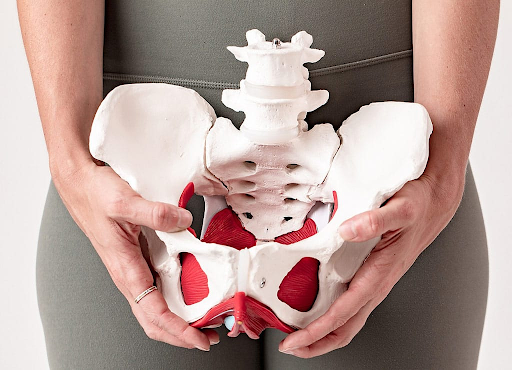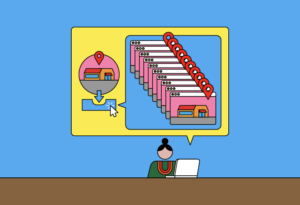
Pelvic floor pain can significantly impact one’s quality of life, leading to discomfort, emotional stress, and a reduced ability to perform daily activities. Fortunately, a holistic approach combining chiropractic care, myofascial release, and other therapies offers a comprehensive solution. This integrated treatment model not only addresses the root causes of pelvic floor dysfunction but also promotes long-term relief and improved wellness. In this article, we explore how pelvic floor therapy, enhanced by chiropractic techniques and myofascial release, can provide effective pain relief.
Understanding Pelvic Floor Pain
Pelvic floor pain refers to discomfort or tension in the muscles, ligaments, and connective tissues that support the organs in the pelvis, such as the bladder, bowel, and reproductive organs. This type of pain is often associated with conditions such as pelvic organ prolapse, urinary incontinence, endometriosis, interstitial cystitis, and post-surgical healing. The pain can range from mild discomfort to intense, chronic pain, and it may affect both men and women, though women are more frequently affected due to pregnancy, childbirth, or gynecological conditions.
Pelvic floor dysfunction can also manifest as pelvic muscle spasms, overactive bladder, difficulty with bowel movements, painful intercourse, and lower back pain. While traditional treatments like medication, physical therapy, and surgery may offer temporary relief, a more holistic approach that incorporates chiropractic care, myofascial release, and craniosacral therapy can address the underlying causes and promote sustainable healing.
The Role of Chiropractic in Pelvic Floor Therapy
Chiropractic care is widely recognized for its ability to enhance overall body function by aligning the spine and improving nervous system communication. When it comes to pelvic floor therapy, chiropractic adjustments can play a key role in addressing musculoskeletal imbalances that contribute to pelvic floor pain. Misalignments in the pelvis, sacrum, and spine can interfere with the proper function of pelvic muscles, leading to pain, tension, and dysfunction.
Chiropractic adjustments can help:
- Restore Proper Alignment: Chiropractic care can realign the pelvis and spine, relieving pressure on the pelvic floor muscles and surrounding structures. This alignment allows the pelvic muscles to function optimally, reducing pain and promoting better mobility.
- Enhance Nervous System Function: The nervous system controls muscle function, and any disruption in spinal alignment can hinder the communication between the brain and the pelvic floor muscles. Chiropractic adjustments can enhance nervous system function, facilitating better coordination and muscle control.
- Improve Posture and Stability: Poor posture often contributes to pelvic floor pain, especially in individuals who spend long hours sitting or have improper body mechanics. Chiropractic care can help improve posture and balance, which can reduce strain on the pelvic region and alleviate discomfort.
By incorporating chiropractic techniques into pelvic floor therapy, individuals can experience a more comprehensive and long-lasting improvement in pain relief.
Myofascial Release: A Targeted Approach to Pelvic Floor Pain
Myofascial release is a hands-on technique that targets the fascia, the connective tissue surrounding muscles, to relieve tension and restrictions. The fascia can become tight or adhesed due to trauma, overuse, or prolonged muscle tension, leading to pain and restricted movement. In the case of pelvic floor pain, myofascial release can be an incredibly effective treatment option.
Myofascial release for pelvic floor therapy involves gentle, sustained pressure applied to specific areas of the pelvis to release tension in the pelvic muscles and fascia. This approach can provide relief from conditions such as pelvic pain, urinary incontinence, and sexual dysfunction. Myofascial release can:
- Release Muscle Tension: Chronic muscle tension is often a key factor in pelvic floor pain. Myofascial release helps to break up muscle adhesions, reduce tightness, and restore flexibility.
- Improve Blood Flow: By releasing fascial restrictions, myofascial release enhances circulation to the pelvic region, promoting healing and reducing inflammation.
- Restore Function: Myofascial release helps to restore normal muscle function by addressing the root cause of muscle tightness and dysfunction, ultimately leading to improved pelvic floor health.
The combination of chiropractic adjustments and myofascial release provides a powerful, non-invasive approach to managing pelvic floor pain, addressing both muscular and structural factors contributing to discomfort.
Craniosacral Therapy: A Gentle, Holistic Approach to Healing
Craniosacral therapy (CST) is another powerful modality that can complement pelvic floor therapy. Although CST is commonly associated with cranial and spinal health, its gentle techniques can be particularly beneficial for addressing pelvic floor issues. Craniosacral therapy works by assessing and enhancing the rhythm of cerebrospinal fluid (CSF) around the central nervous system. By gently manipulating the skull and spine, CST aims to release restrictions in the nervous system that could contribute to pelvic pain or dysfunction.
For individuals with pelvic floor pain, craniosacral therapy can:
- Release Tension in the Pelvic Region: CST helps to release deep-seated tensions in the connective tissues and fascia that can affect the pelvic floor. By balancing the craniosacral system, CST can help alleviate pain and restore function in the pelvic area.
- Improve Nervous System Communication: Because CST works directly with the nervous system, it can help improve communication between the brain and pelvic floor muscles, leading to more effective muscle control and relief from symptoms.
- Promote Relaxation and Stress Reduction: Pelvic floor pain is often exacerbated by stress and emotional tension. Craniosacral therapy helps activate the body’s relaxation response, which can have a profound impact on pain reduction and overall well-being.
CST, when used in conjunction with chiropractic and myofascial release, offers a holistic and effective approach to managing pelvic floor pain and supporting long-term healing.
The Holistic Benefits of Combined Therapy
When chiropractic care, myofascial release, and craniosacral therapy are combined into a unified treatment plan, they create a holistic approach to pelvic floor therapy that addresses multiple layers of dysfunction. Together, these therapies can:
- Target the Root Cause: Many pelvic floor issues are caused by a combination of musculoskeletal imbalances, fascial restrictions, and nervous system disruptions. A comprehensive approach can address all these factors simultaneously, promoting more effective healing.
- Promote Sustainable Relief: By focusing on long-term correction rather than short-term symptom management, this holistic approach helps to reduce the likelihood of recurring pelvic floor pain.
- Support Overall Wellness: Pelvic floor therapy not only helps to alleviate pain but also improves overall body function, posture, and emotional well-being, contributing to a higher quality of life.
Moving Toward Lasting Pain Relief and Wellness
Pelvic floor pain can be debilitating, but it is important to know that relief is possible through a holistic treatment approach. Chiropractic care, myofascial release, and craniosacral therapy offer an integrated solution that can effectively address the underlying causes of pelvic floor dysfunction. By combining these therapies, individuals can experience lasting pain relief, improved pelvic health, and a better quality of life.
If you are experiencing pelvic floor pain, consider seeking out a qualified healthcare provider who specializes in these holistic therapies. With the right support and care, you can regain control over your pelvic health and live a life free from discomfort.
This holistic treatment approach provides a path to healing that addresses the body as a whole, offering not only pain relief but also improved functionality, balance, and well-being. By integrating chiropractic, myofascial release, and craniosacral therapy into your pelvic floor therapy plan, you can take significant steps toward restoring balance and achieving lasting relief.




